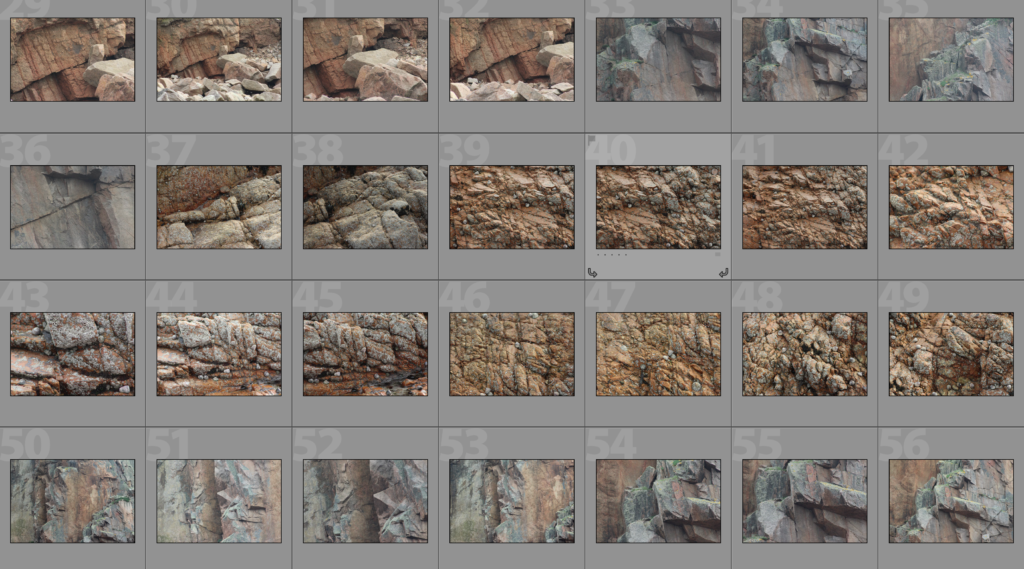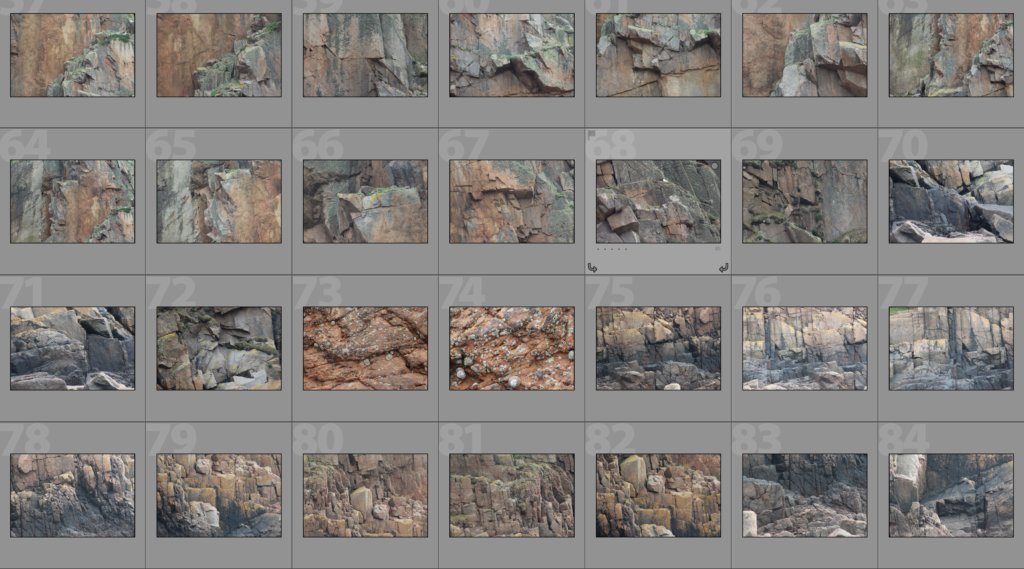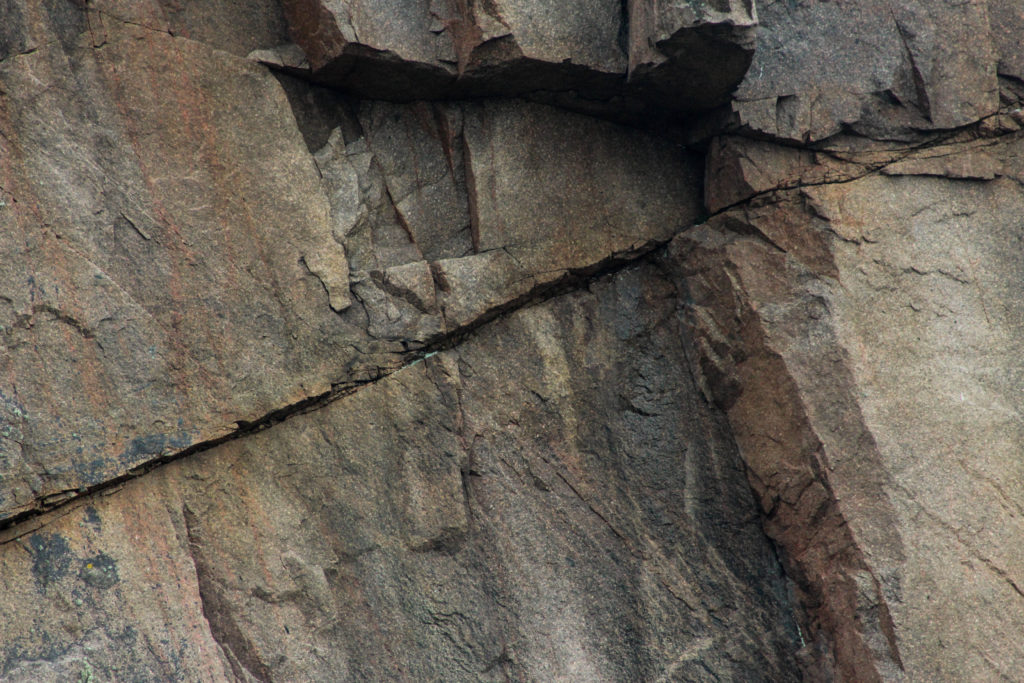Granite is a resource in Jersey that is available in abundance and plays a key part in the structures in Jersey. Lots of houses are built with the stone but the majority of them have plaster and paint covering the granite, whereas others have the granite exposed. This shoot serves the purpose of collecting photographs of granite rock faces of different shapes and at different angles. The reason I am doing this is so that I can use the material that I produce to create a contrast with the man-made structures that I have been photographing. I am planning on continuing with the style of editing that I have been experimenting, such as double exposure and layering photographs over each other to show this contrast. The photographs of the buildings that I am comparing these rock faces against are in black and white whereas I will be keeping these photographs in colour as I believe that the natural earthy tones of the rock will help to create an effective contrast within the compositions. Ultimately, the edits will show comparisons between how shapes are formed in man-made structure against the shapes formed in natural rocks by the waves over time.




Analysis

To capture this photograph of a granite rock face I used the natural daylight from Oueisne beach where the shoot took face. This natural daylight allowed for the natural shadows and crevices within the rock face to come to light and created contrast between the different depths of the rock face. I used a 300mm lens to capture the photograph so that I could zoom in and create a close-up abstract photograph of the rock face that focused on the edges and shapes within the rock rather than the surroundings. I used an ISO of 800, an aperture of f/8.0 and a shutter speed of 1/500 when taking the photograph. The ISO of 800 is fairly high but ensures that the photograph is correctly exposed along with the quick shutter speed of 1/500 that allows the photograph to be sharp and focused when the camera is zoomed in to such an extent. The depth of field ensures that the photograph is fully in focus and is clear.
There is wide tonal range in this photographs due to the sharp edges of the rock and the natural formations and cracks. There is also a range of earthy colours throughout the photograph as some parts of the rock face are more weathered than others – this helps to create a texture in the photograph as the edges can clearly be seen as sharp and the weathering can be seen in different areas. There is also a 3D effect due to the different depths of the rock face which emphasises the shapes and shadows within the photograph. There is no repetition in structure in the photograph as there is of my photographs with man-made structures which shows the contrast between a natural structure and an artificial one.
The photo is intended for editing alongside the photographs of building faces that I have produced and will aid me in showing contrast between buildings and natural rock formations. I chose to photograph granite specifically because it is a key natural resource of Jersey and is used in lots of housing. – the idea is that by editing the granite along with the buildings it will give a feeling of peeling back the layers to reveal the building materials supporting the buildings.
